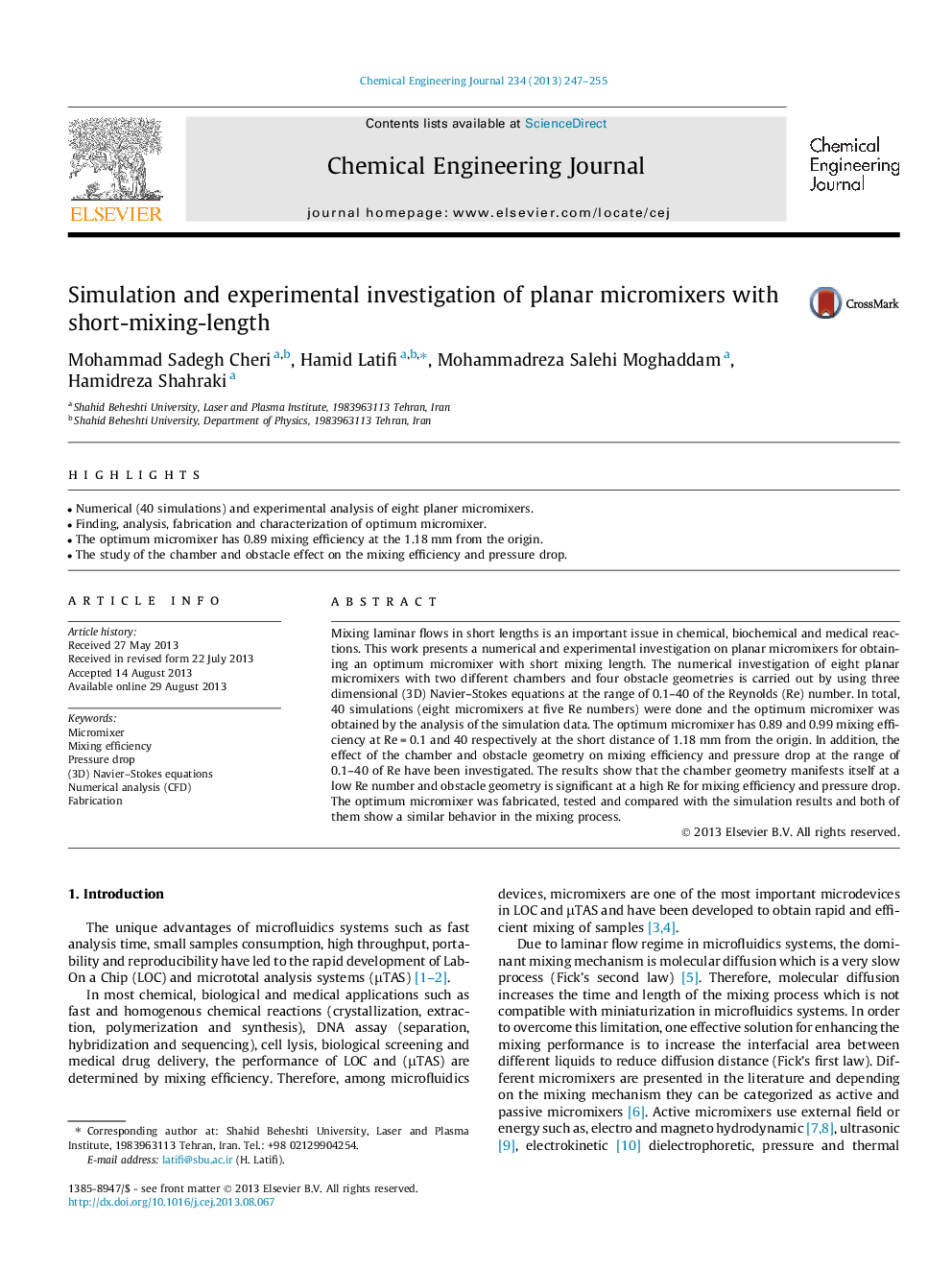| Article ID | Journal | Published Year | Pages | File Type |
|---|---|---|---|---|
| 148104 | Chemical Engineering Journal | 2013 | 9 Pages |
•Numerical (40 simulations) and experimental analysis of eight planer micromixers.•Finding, analysis, fabrication and characterization of optimum micromixer.•The optimum micromixer has 0.89 mixing efficiency at the 1.18 mm from the origin.•The study of the chamber and obstacle effect on the mixing efficiency and pressure drop.
Mixing laminar flows in short lengths is an important issue in chemical, biochemical and medical reactions. This work presents a numerical and experimental investigation on planar micromixers for obtaining an optimum micromixer with short mixing length. The numerical investigation of eight planar micromixers with two different chambers and four obstacle geometries is carried out by using three dimensional (3D) Navier–Stokes equations at the range of 0.1–40 of the Reynolds (Re) number. In total, 40 simulations (eight micromixers at five Re numbers) were done and the optimum micromixer was obtained by the analysis of the simulation data. The optimum micromixer has 0.89 and 0.99 mixing efficiency at Re = 0.1 and 40 respectively at the short distance of 1.18 mm from the origin. In addition, the effect of the chamber and obstacle geometry on mixing efficiency and pressure drop at the range of 0.1–40 of Re have been investigated. The results show that the chamber geometry manifests itself at a low Re number and obstacle geometry is significant at a high Re for mixing efficiency and pressure drop. The optimum micromixer was fabricated, tested and compared with the simulation results and both of them show a similar behavior in the mixing process.
